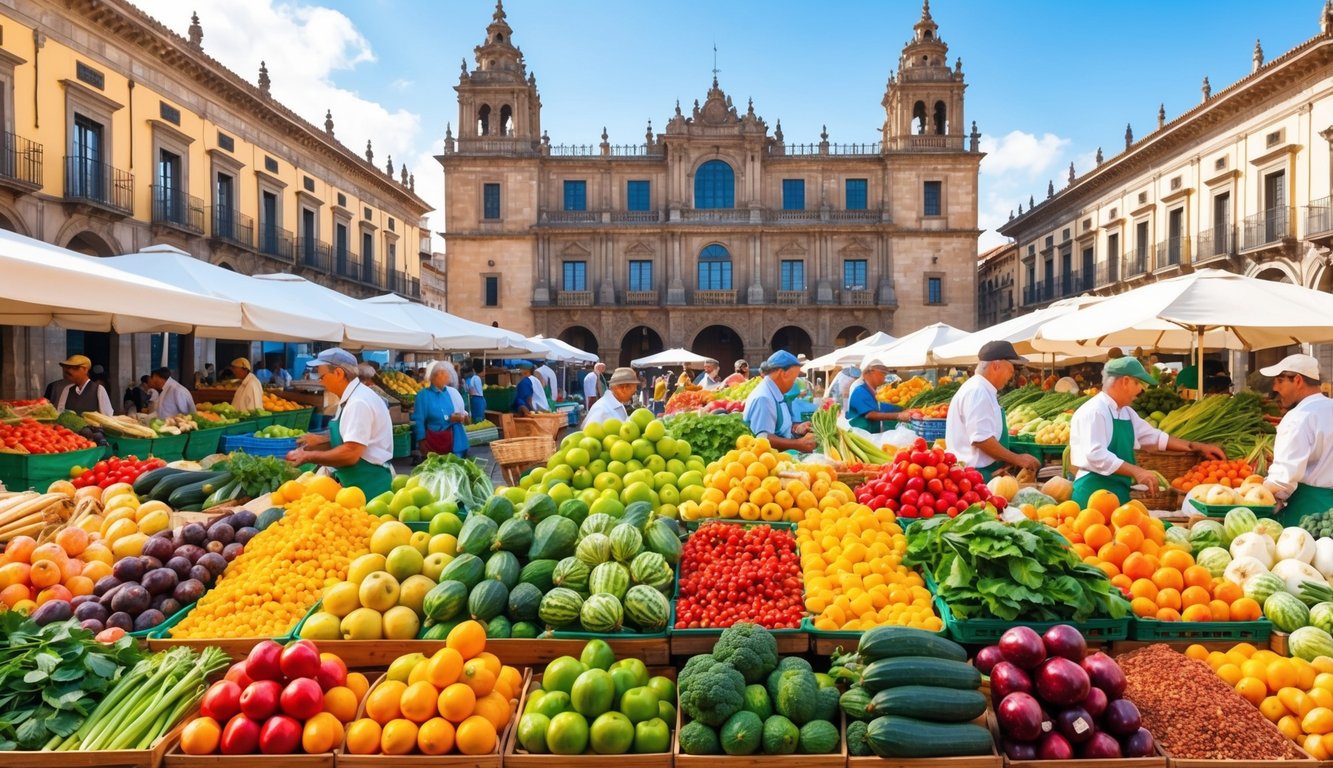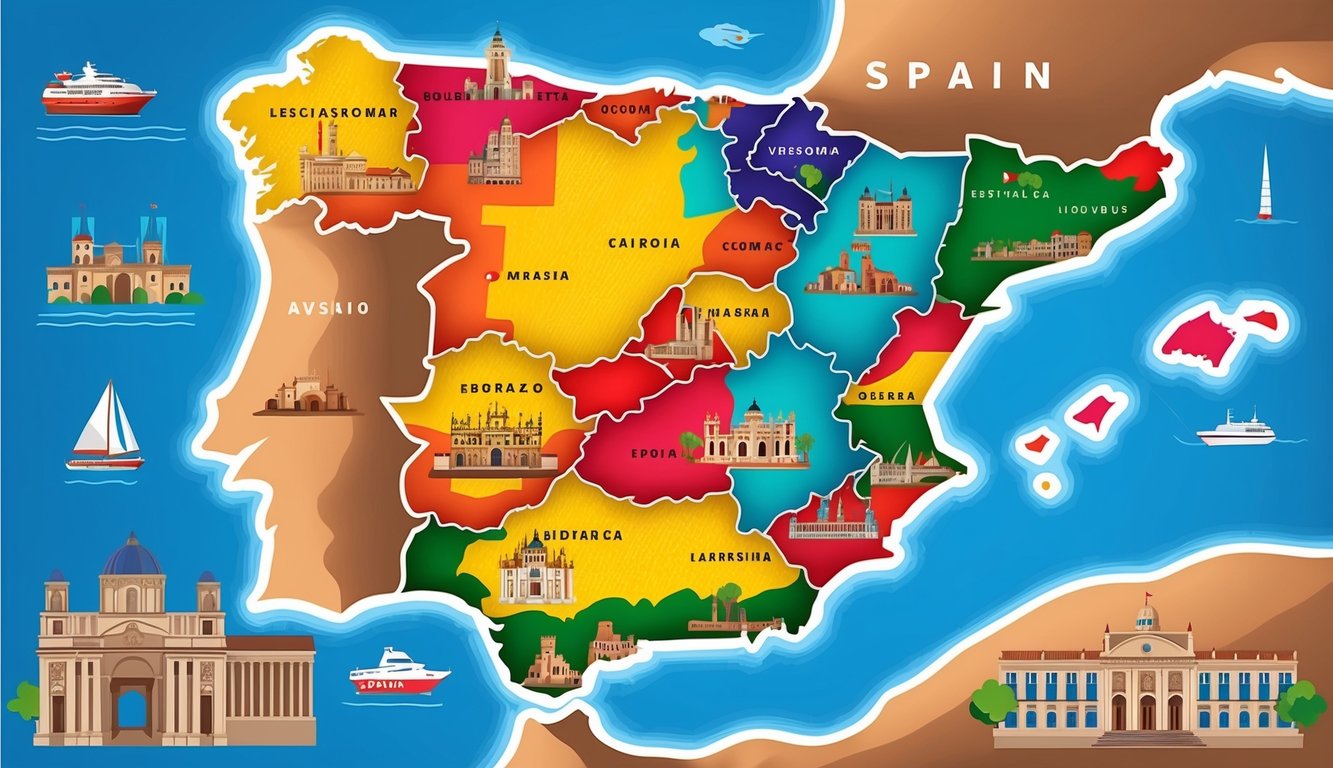Spain is a vibrant country full of rich culture, stunning architecture, and delicious food. If you’re planning a trip, you might wonder how to make the most of your time there. With these 7 perfect 10-day itineraries, you can explore the best that Spain has to offer without feeling rushed.
Each itinerary is designed to help you experience major cities and hidden gems alike. Whether you’re into art, history, or simply enjoying the beautiful landscapes, there’s something for everyone. Get ready to dive into the heart of Spain and create unforgettable memories.
Best Time To Visit Spain

When planning your trip to Spain, keep in mind the best weather and local events that might enhance your experience. Spain offers unique charm throughout the year, and knowing what to expect helps with your planning.
Weather Considerations
Spain’s climate varies by region, so you’ll want to tailor your visit according to your ideal weather.
-
Spring (March to May): This is one of the best times to visit. The weather is mild and flowers are in bloom. Cities like Barcelona and Seville see pleasant temperatures around 60-75°F.
-
Summer (June to August): Expect hot conditions, especially in inland areas like Madrid and Seville, where temperatures can exceed 100°F. The coast remains cooler, making it perfect for beach trips.
-
Fall (September to November): Fall offers warm weather and fewer crowds. You can enjoy temperatures ranging from 70-80°F in early September, which is great for exploring.
-
Winter (December to February): Winters are mild in the south, with temperatures around 50°F, but colder in the north. Cities like Granada can even see snow.
Festivals and Events
Spain is known for its vibrant festivals, making any time a good one to visit, depending on your interests.
-
La Tomatina (last Wednesday in August): This famous tomato-throwing festival in Buñol is a sight to see. It’s a fun way to experience Spanish culture.
-
Semana Santa (Holy Week): Celebrated in March or April, this week-long series of religious processions occurs throughout the country. Seville is particularly famous for its deeply traditional celebrations.
-
Feria de Abril (April Fair): Held in Seville two weeks after Semana Santa, this colorful fair celebrates Andalusian culture with flamenco dancing, food, and rides.
-
Carnival (February): Cities like Cádiz and Santa Cruz host some of the biggest carnival celebrations in Europe. It’s a lively time filled with costumes, parades, and parties.
Travel Tips For Exploring Spain
When exploring Spain, knowing how to get around and understanding the local customs can enhance your experience. Keep these travel tips in mind to navigate the country smoothly and respect its vibrant culture.
Transportation Guide
Spain has a well-connected transportation system that makes getting around easy. Here are a few ways to travel:
- Trains: High-speed trains like the AVE are efficient for long distances. Book tickets in advance for better prices.
- Metro: Cities like Madrid and Barcelona have extensive metro systems that are affordable and reliable.
- Buses: They can be a cheaper alternative for intercity travel. Check companies like ALSA for routes.
- Walking: Many cities have pedestrian-friendly areas. Walking allows you to soak up the atmosphere.
Consider purchasing a transportation pass if you plan on using public transit often. It can save you money and time.
Cultural Etiquette
Understanding Spanish culture is crucial for a great trip. Here are some key points:
- Greetings: A handshake is common, but friends often kiss on both cheeks. It’s warm and friendly.
- Dining: Dinner starts late, usually around 9 PM. Tipping is appreciated, but not mandatory. Leaving small change is sufficient.
- Siesta: Many shops close in the afternoon for a break, especially in smaller towns. Plan your activities accordingly.
- Punctuality: Being slightly late (10-15 minutes) is acceptable in social settings. However, try to be on time for business or important gatherings.
Must-Try Spanish Cuisine

Spain is a food lover’s paradise. From delightful local dishes to hidden gem restaurants, the culinary experience is as rich as the culture. Here’s what you shouldn’t miss.
Local Dishes To Savor
When in Spain, there are some dishes you absolutely have to try. Here’s a quick list of must-taste meals:
- Paella: Originating from Valencia, this rice dish typically features seafood or chicken, flavored with saffron.
- Tapas: Small plates of various snacks or appetizers. Options range from patatas bravas (spicy potatoes) to jamón ibérico (cured ham).
- Gazpacho: A refreshing cold soup made from tomatoes, cucumbers, and bell peppers, perfect for hot summer days.
- Churros: Fried dough pastries, often served with a cup of thick hot chocolate for dipping.
Make sure to enjoy these dishes at local eateries, where the ingredients are fresh and flavors are authentic.
Best Restaurants Off The Beaten Path
If you want to escape the tourist traps, seek out local restaurants that offer a true taste of Spain. Here are a few recommendations:
- Taberna El Sur (Madrid): A cozy spot known for its flavorful tapas and vibrant atmosphere. Perfect for an evening with friends.
- Casa Montaña (Valencia): A charming venue that pairs a great wine selection with traditional food. Don’t miss their fresh seafood.
- Bodega 1900 (Barcelona): A modern twist on traditional dishes. The vermouth here is a must-try, alongside innovative tapas.
These hidden gems allow you to experience Spain’s culinary scene like a local. Enjoy the adventure!
Frequently Asked Questions
Planning a 10-day trip to Spain can raise a lot of questions. Here are some common inquiries to help you get started on your adventure.
What are the top places to include in a 10-day Spain itinerary?
Some must-see places are Madrid, Barcelona, Seville, and Granada. You can explore famous attractions like the Prado Museum in Madrid and the Alhambra in Granada. Don’t forget to check out the stunning architecture and lively atmosphere in each city.
How can I plan a 10-day tour of Spain by train?
Traveling by train is a great way to see Spain. You can buy a Spain rail pass for flexible travel. High-speed trains connect major cities, making it easy to move from Barcelona to Madrid or Seville to Granada.
Can I fit a visit to Ibiza into my 10-day Spain travel plan?
Yes, but it requires some planning. Consider flying to Ibiza from the mainland after visiting a few cities. You can enjoy the beaches and nightlife, but be mindful of time to ensure you don’t miss other highlights.
What’s the best way to spend 7 days starting in Madrid?
Start by exploring Madrid for a couple of days. Then, take day trips to places like Toledo and Segovia. Next, head to Seville and finish your week in Granada to see the Alhambra.
How much spending money will I need for a week’s trip to Spain?
A budget of around $100 to $150 per day is reasonable for food, transport, and attractions. It can vary based on where you eat and how you travel. Plan for extra if you want to enjoy unique experiences.
Is it realistic to explore Spain in just 10 days?
Yes, it is realistic. You’ll need to prioritize your destinations. Focus on major cities and allow time for some local experiences. It may feel rushed, but you can still enjoy the highlights of Spain in this timeframe.




